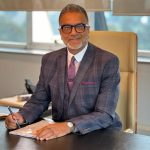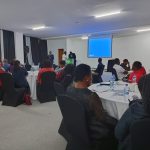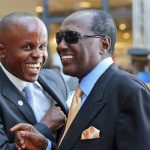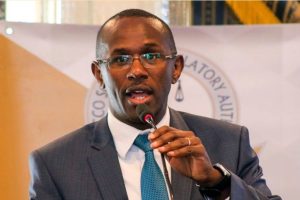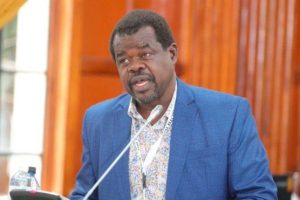Kenyan President Uhuru Kenyatta announced the death but did not provide a specific cause.
Mr. Moi was one of the last of Africa’s so-called Big Men, who presided over their countries in increasingly despotic ways. During 24 ruinous years in power, he curtailed political freedom, presided over the stagnation of Kenya’s economy and encouraged patronage politics. He enshrined his name on currency, schools, an international airport and other prominent sites throughout the East African country.
Despite condemnation by human rights groups and allegations that he had stolen millions of dollars in aid money, Mr. Moi’s ties to the United States remained strong because of Kenya’s staunch anti-communism and relative stability in a region ravaged by war and by leaders who were even more erratic.
“We’ve been having peace for 39 years,” Mr. Moi told a crowd before he stepped down in 2002. “Sometimes when I hear all the criticism, I ask myself, ‘Are you tired of peace?’ I wish people would go to the neighboring countries and then speak.”
That year, Transparency International, an anti-corruption group, called Kenya one of the most corrupt countries in the world, assailing the nation’s police and judges as among the worst offenders.
Kenya remained a mostly poor nation. While its economy grew marginally, corruption and crime became entrenched under Moi.
In the years before Mr. Moi became president, most Kenyans regarded him as unthreatening: a tall, immaculately dressed former schoolteacher who belonged to neither of Kenya’s two largest tribes. He seemed, by all appearances, the opposite of his predecessor, Jomo Kenyatta, the war-scarred hero who led Kenya after it gained independence from the disappearing British Empire in 1963.
Mr. Moi had been vice president to Kenyatta, and he took over after Kenyatta’s death in 1978, having gained broad support by promising to maintain a balance of power among Kenya’s tribes. He was a member of the Kalenjin tribe, and the two largest tribes, the Kikuyu and Luo, had ruled the country since the pre-independence period.
Early in his presidency, Mr. Moi’s administration claimed to be primarily concerned with such objectives as good governance, economic development and tribal harmony. Mr. Moi established a free milk program for schoolchildren and released political detainees.
Then, in 1982, Kenya’s constitution was amended to make the country, which had been a one-party state in fact, a one-party state by law. This helped spur a coup attempt by Kenyan air force officers who were Luos.
With the support of the army and a paramilitary police force called the General Service Unit, Mr. Moi crushed the uprising and arrested and replaced almost the entire air force. He paid bonuses to loyal military officers and gave farmland to others, further cementing ethnic divisions in the country.
At one point, he ruthlessly engineered the fall of a key supporter, former attorney general Charles Njonjo, a Kikuyu. He explained: “You know, a balloon is a very small thing. But I can pump it up to such an extent that it will be big and look very important. All you need to make it small again is to prick it with a needle.”
Torotich arap (which means “son of”) Moi was born Sept. 2, 1924, north of Nairobi in the remote hills of the Rift Valley. His father was a cattle herder. He was baptized by missionaries and given the name Daniel as a child. After his father’s death, his paternal uncle arranged for his education at mission schools.
Mr. Moi eventually received a certificate in public accounting from London through a correspondence course, and in 1945, he began a career in government schools as a teacher and administrator.
Mr. Moi did not participate in the Mau Mau insurgency against British rule in the early 1950s, but he supported the movement and took in several fighters during that time. In 1960, he was elected assistant treasurer of the newly formed Kenya African National Union (KANU), a political group that would become the heart of the independence movement.
A year later, Mr. Moi, fearing that KANU would not serve minority interests, formed the short-lived Kenya African Democratic Union, made up of smaller tribes. The new party was absorbed into KANU at Kenyatta’s urging to form a united front at the time of independence.
As president, Kenyatta appointed Mr. Moi to several positions. One of the most important was minister for home affairs, which made him head of Kenya’s national police, prisons and immigration departments. There he made connections that would prove helpful to him as president. He was appointed vice president in 1967.
After Kenyatta’s death, Mr. Moi automatically became interim president. He preached national unity at first, and he promised to put an end to government corruption and to form a multiethnic coalition.
On Oct. 6, 1978, thousands of KANU delegates, wearing shirts that read, “Moi, the son of Mzee, loved,” unanimously elected Mr. Moi to lead the party and become president. His grip on Kenya, then seen as loving and patriotic, quickly turned into a fiercely clenched authoritarian fist.
Bill Berkeley, a journalist and author who has written extensively about Africa, observed in the Atlantic that Mr. Moi was “widely loathed [and] presided for years over a predatory single-party regime that was made possible by the patronage of the West. . . . During the Cold War, the United States poured billions of dollars into Kenya, helping to sustain Moi’s patronage-based government and enrich his clique.”
The early 1990s brought an end to the Cold War, the beginning of international scrutiny of violations of democracy in Kenya and a push to hold multiparty elections. Until then, Kenya had one state-sanctioned party and no limit on the number of terms a president could serve.
The U.S. ambassador at the time, Smith Hempstone, was widely credited with making clear the lack of tolerance for Mr. Moi’s crackdowns on political dissent and other abuses of power. The leader initially fought hard to resist such pressure to democratize.
As demands for freer elections intensified, Mr. Moi’s government tortured and killed political opponents, burned homes and destroyed media organizations that criticized the government, according to historians and human rights organizations. In the face of criticism from the West, Mr. Moi received support from surprising quarters.
During an international tour, South African anti-apartheid leader Nelson Mandela paid a visit to Nairobi in 1990 and said: “What right have the whites anywhere to teach us about democracy, when they executed those who asked for democracy during the time of colonial rule?”
In late 1991, international donors suspended payment of $350 million in aid to Mr. Moi’s government — a devastating blow given the country’s crumbling economy and declining tourism. The president reversed himself and directed Parliament to change the constitution to allow multiparty elections.
They were held in December 1992, and Mr. Moi won with just over 34 percent of the popular vote. He won again in 1997, even though he again received less than half the vote. The opposition failed to join forces against him. Historians also say that massive fraud and voter-intimidation tactics that left hundreds dead and thousands homeless contributed to Mr. Moi’s victories.
As economic despair continued in Kenya, Mr. Moi appointed Richard Leakey, a fossil-hunting paleoanthropologist and politician, to lead the civil service in 1999. Leakey was a longtime Moi opponent with a reputation for honesty, and he proposed measures to eliminate waste and corruption, which included cutting 25,000 civil servants from the public payroll. Mr. Moi sacked Leakey in 2001, just as the country had begun to win back the trust of international aid groups.
Leakey had earlier told an interviewer: “When you sit down and talk to him, he doesn’t come across as venal, scheming or dangerous. He comes across as congenial, compassionate — a benevolent leader. You can tell him your frustrations, and you leave feeling, ‘Boy, that man is really concerned.’ ”
Kenya’s constitution required that Mr. Moi step down by 2003. Rather than attempting to remain as president, he gave up his hold on Kenya.
“He engaged in modest redemption by leaving power,” said Scott Taylor, a Georgetown University scholar on African politics.
The ethnic tensions that were part of Mr. Moi’s legacy have continued to spark violence in Kenya, most disturbingly in 2007 after elections that some complained were rigged to keep the Kikuyus in power. Hundreds of people were killed, and many more were displaced.
In his private life, Mr. Moi kept his ex-wife, Lena Bomett, and their eight children out of public view. He liked to present himself as a devout Christian who read his Bible every day. He denounced hippies and miniskirts, and he didn’t smoke or drink alcohol.
One of his favorite accoutrements was a silver-topped ivory stick, a symbol of a prosperity that was rare in Kenya outside his inner circle.
He told an audience in 1997 that he was misunderstood as a leader and that many of his critics were duplicitous. “I am not a dictator,” he said. “Although people blame Moi now, one day they will understand what Moi was.”
By Yamiche Alcindor via The Washington Post. Additional reporting by Adam Bernstein.
